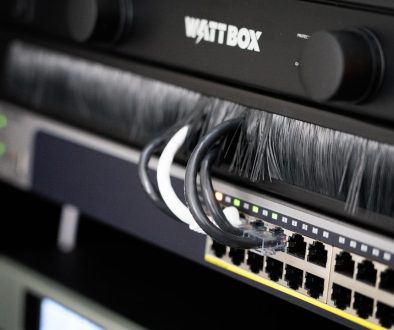Common Log Management Mistakes and How to Avoid Them
Effective log management is vital for organizations striving to maintain robust security and performance in their systems. It involves collecting, analyzing, and using log data efficiently. Despite its significance, many organizations commit common mistakes that lead to security vulnerabilities and operational inefficiencies. Recognizing and addressing these pitfalls can significantly enhance log management strategies, ensuring that data is properly utilized and protected.

Not Prioritizing Log Retention Policies
One significant mistake is failing to establish clear log retention policies. Logs contain detailed records of system activity necessary for troubleshooting and forensic analysis. Organizations that do not define how long to retain these logs may find themselves without vital data during audits or investigations.
Not all logs need to be kept indefinitely. It’s advisable to categorize logs based on their importance and relevance. Security logs may require longer retention periods than standard operational logs. Regular reviews of log retention policies help ensure compliance with industry regulations and standards.
Neglecting Log Analysis
Many organizations underestimate the importance of ongoing log analysis after collection. Merely having logs is not sufficient; they must be actively monitored and analyzed for insights. Neglecting this practice can lead to missed security threats or operational issues.
Employing advanced analytics coupled with machine learning techniques can significantly improve log analysis. These centralized log management tools allow organizations to detect anomalies and patterns in log data more effectively. Automated alerts can notify the security team of suspicious activities, enabling timely responses. Without consistent monitoring, even minor irregularities can escalate into significant breaches that compromise data integrity.
Regular reviews help identify performance bottlenecks that may otherwise go unnoticed. Beyond threat detection, comprehensive analysis can provide valuable insights for compliance audits and regulatory reporting. Log analysis builds a knowledge base that strengthens both security postures and operational efficiency.
Overlooking Compliance Requirements
Organizations that operate under specific regulatory frameworks often overlook compliance requirements related to log management. Non-compliance can result in significant fines and legal challenges. It’s important to understand the regulatory requirements that apply to your organization and ensure that your log management practices align with them.
Financial institutions must adhere to the rules set forth by regulations like GLBA or PCI DSS, which outline specific log retention and monitoring protocols. Regular audits should be scheduled to assess compliance with internal policies and external regulations.
Failure to conduct proper reviews can expose organizations to reputational harm, as stakeholders may lose trust in their data handling practices. Implementing automated compliance checks within log management systems can reduce the risk of oversight.
Clear documentation of compliance activities serves as a safeguard during investigations or disputes. Organizations can strengthen their governance structures and prevent penalties by taking proactive measures to address compliance. Aligning log management with regulatory obligations demonstrates accountability and builds long-term resilience.
Inadequate Security Controls
A common mistake in log management is underestimating the need for security controls around log data. Logs, if not adequately protected, can become a target for attackers seeking to manipulate or erase important records. Implementing security measures to safeguard logs is critical.
Ensure that logs are stored in secure locations and access is strictly controlled. Implementing role-based access controls can help limit exposure to sensitive log data. Encryption should be employed for logs in transit and at rest to prevent unauthorized access.
Regular security reviews of log management systems can help identify potential vulnerabilities before they are exploited. Multi-factor authentication should be considered for teams handling sensitive logging environments.
Continuous monitoring can detect unusual access attempts, adding another layer of protection. Organizations that integrate security controls into their log management strategy reinforce both compliance and operational resilience. Without these protections, even valuable log data can quickly become a liability rather than an asset.
Failure to Define Clear Responsibilities
Log management should not be a vague notion and requires clear roles and responsibilities. Failing to define ownership of log management tasks can lead to confusion and operational inefficiencies. Each team member must understand their responsibilities in the log management process.
Designating a log management team can ensure that every aspect of log handling, from collection to analysis and reporting, is managed effectively. Regular training sessions can help staff stay engaged with the importance of proper log management and the potential consequences of mismanagement.

Lack of Regular Review and Update Procedures
A stagnant log management system may become less effective. Organizations that do not regularly review and update their log management practices may find that outdated tools and processes do not meet current needs effectively. Regular evaluations and updates to log management strategies help maintain reliability and security.
Setting up a routine for reviewing log management processes ensures that evolving technologies and threats are considered. Engaging with feedback from team members involved in log management can reveal areas that need improvement and establish an environment conducive to continuous improvement.
Log management plays an integral role in enhancing security and operational efficiency. Organizations can avoid common mistakes by prioritizing policies for log retention, regular analysis, understanding compliance, enforcing security measures, defining responsibilities, and committing to ongoing reviews. Taking these steps will lead to a more robust log management framework that supports business objectives.
- What Most First-Time Site Owners Overlook Before Launching Online - November 21, 2025
- THE.Hosting Review 2025: Honest Experience with VPS & Hosting Services - September 24, 2025
- TOP 5 e-scooter apps developers 2025 - September 19, 2025
Where Should We Send
Your WordPress Deals & Discounts?
Subscribe to Our Newsletter and Get Your First Deal Delivered Instant to Your Email Inbox.



